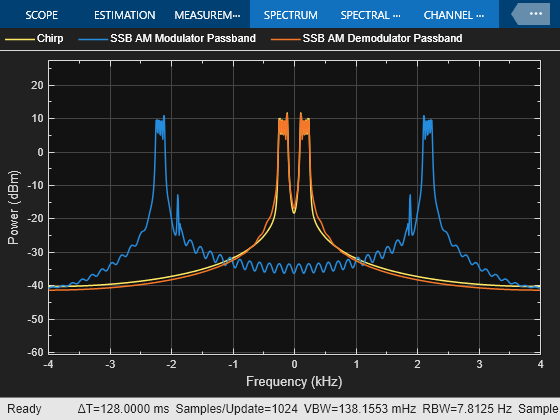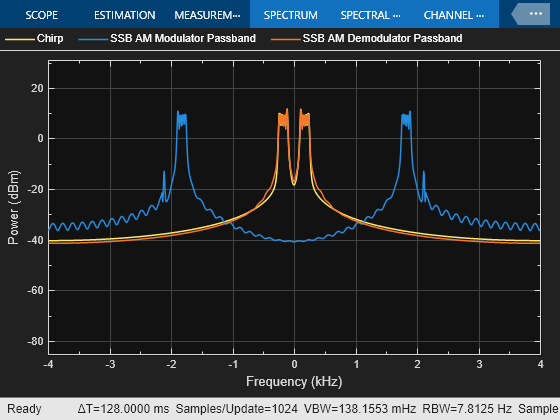SSB AM Modulator Passband
側波帯振幅変調を使った変調
ライブラリ:
Communications Toolbox /
Modulation /
Analog Passband Modulation
説明
SSB AM Modulator Passband ブロックは、ヒルベルト変換フィルターのある単側波帯振幅変調を使用して信号を変調します。入力信号と出力信号は両方とも実数のスカラー信号です。
例
制限
このブロックは、Triggered Subsystem 内では機能しません。
端子
入力
出力
パラメーター
ブロックの特性
データ型 |
|
多次元信号 |
|
可変サイズの信号 |
|
アルゴリズム
参照
[1] Peebles, Peyton Z, Jr. Communication System Principles. Reading, MA: Addison-Wesley, 1976.
拡張機能
バージョン履歴
R2006a より前に導入



